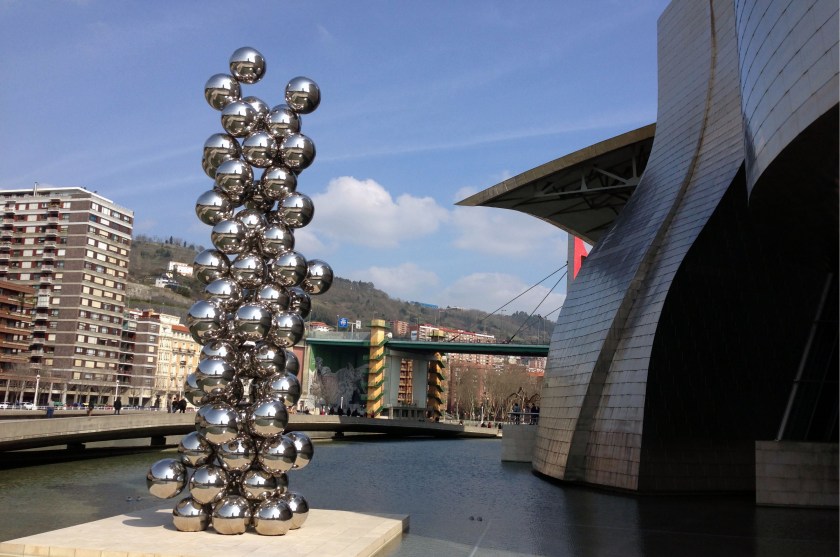The seaside town of San Sebastian draws many visitors to the the Pais Vasco – Basque Country. San Sebastian is beautifully situated on a beach-fringed bay. Irun and the bird sanctuary at Txingudi Plaiaundiko is not far away, nor is Biarritz in France where I hoped to see some new gulls and seabirds.

San Sebastian
I liked San Sebastian, also called Donostia. Lots of bars with pinchxos, called tapas elsewhere in Spain. Our accommodation was a pension complete with pink satin bedspreads and embroidered linen. Granny-chic, my wife calls it. I can’t complain. In North America, I’m used to staying in the type of places where signs ask you not to clean your fish in your room. So granny-chic is okay. By the way, they stay up late in Spain. We waited for a taxi while trying to catch an early train, lined up with the kids going home from nightclubs. This was at eight in the morning.
Basque country is hill country. Swiss-looking houses perch on steep slopes; swift rivers run through narrow ravines on their way to the sea. A great place to look for eagles, although I saw none. Too early in the year perhaps. This used to be, and maybe still is, the most important industrial region in Spain. Now many of the riverside factories are closed and abandoned. With windows broken and walls covered with graffiti, they are symptomatic, perhaps, of the economic forces that have driven the unemployment rate in Spain to 25% or more.
The largest city, Bilbao, has transformed itself into a cultural mecca. The famous Frank Gerhy-designed Guggenheim Museum, situated on a beautiful stretch of the Nervion River, is the crown jewel of the redevelopment, although I was encouraged to see a maritime museum nearby. The Basques have always been great seafarers, being among the first to visit North American waters. i think, but don’t know, that the ruthless explorer, Vasco da Gama, was Basque. In Spanish, Vasco means Basque.
I’d heard unflattering things about industrial Bilbao but I found it quite pleasant. To the south is the wine growing region of La Rioja where I saw White Wagtails and heard thrushes by the score as well as sampling some very fine wine.

Bilbao Riverside
The next day we went to Biarritz in France with a stop on the way back at Txingudi Plaiaundiko, near the town of Irun. Txingudi is a nature reserve with trails and walkways through marshes, ponds and along the estuary foreshore. Well-placed viewing blinds allow views of the muddy shallows favoured by shorebirds. As is the case everywhere in the Pais Vasco, all signs are in Spanish and Basque.

Park Sign in Spanish and Basque
I was probably a little early for the full migration but lots of birds were in, including many Chiffchaffs and some other warblers, European Robins, Eurasian Blackbirds, Black and Red Kites, and Song Thrushes. The day was cool but sunny, with birds seemingly everywhere. The park buildings and structures seem to be deteriorating, a likely indication of lack of funding and a struggling economy. There seems to be a bit too much trash lying around too, especially in the water.

Chiffchaff
Shorebirds were plentiful. I was delighted to see both Redshanks and Greenshanks. Little and Cattle Egrets wandered the flats spearing fish.A half dozen Little Grebe chased each other in deeper water. A Squacco Heron mingled with gulls on an island in the estuary, hardly larger than they.

Redshank

Little Grebe
We left Txingudi late in the day. The wind had picked up and cooled off – it was still March. Back in San Sebastian we had to find parking for our rental car, there being none near the pension. That accomplished, we headed into Old Town for pinxchos and crianza. Two countries, and a major birding site. Not a bad way to spend a day.
